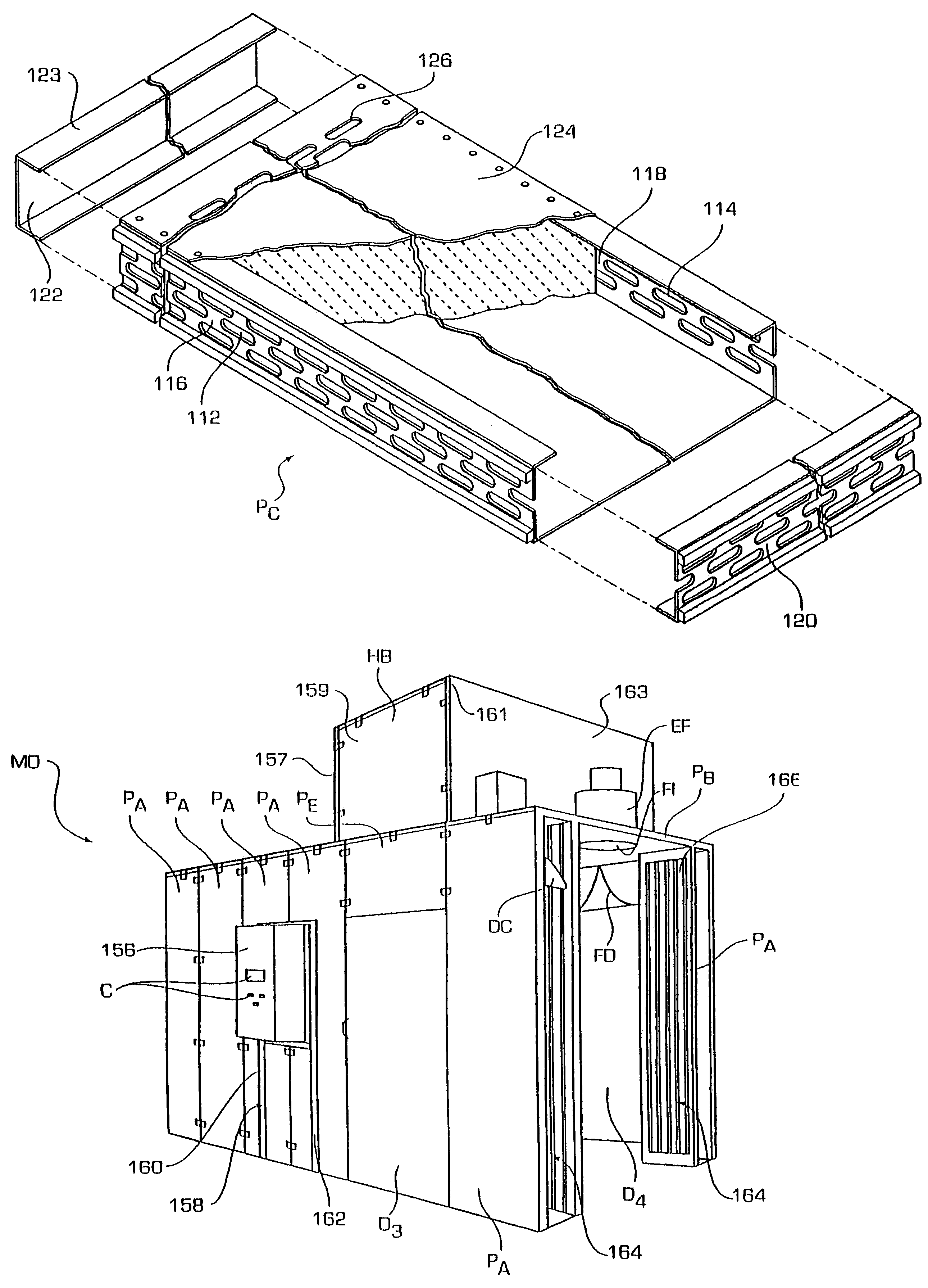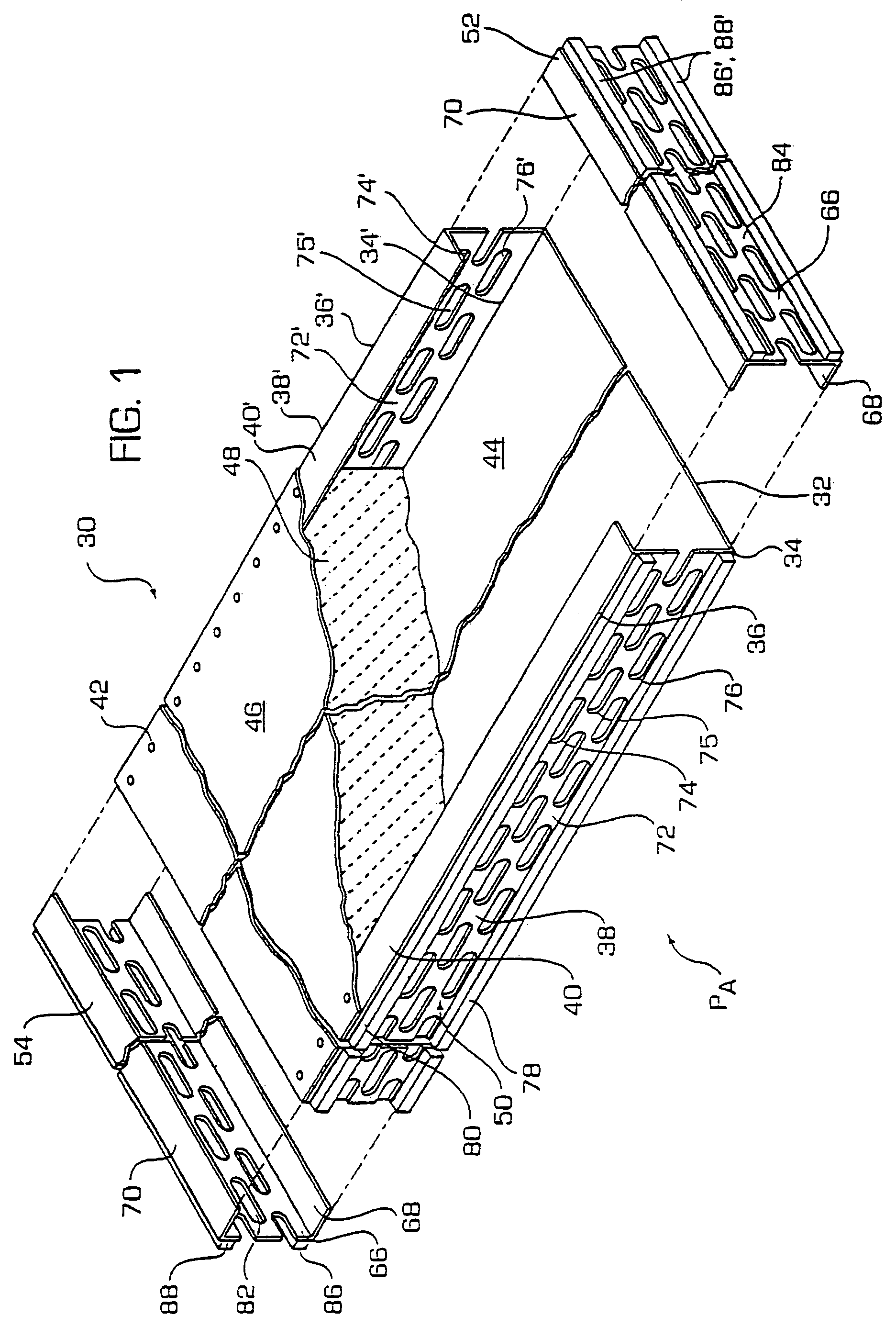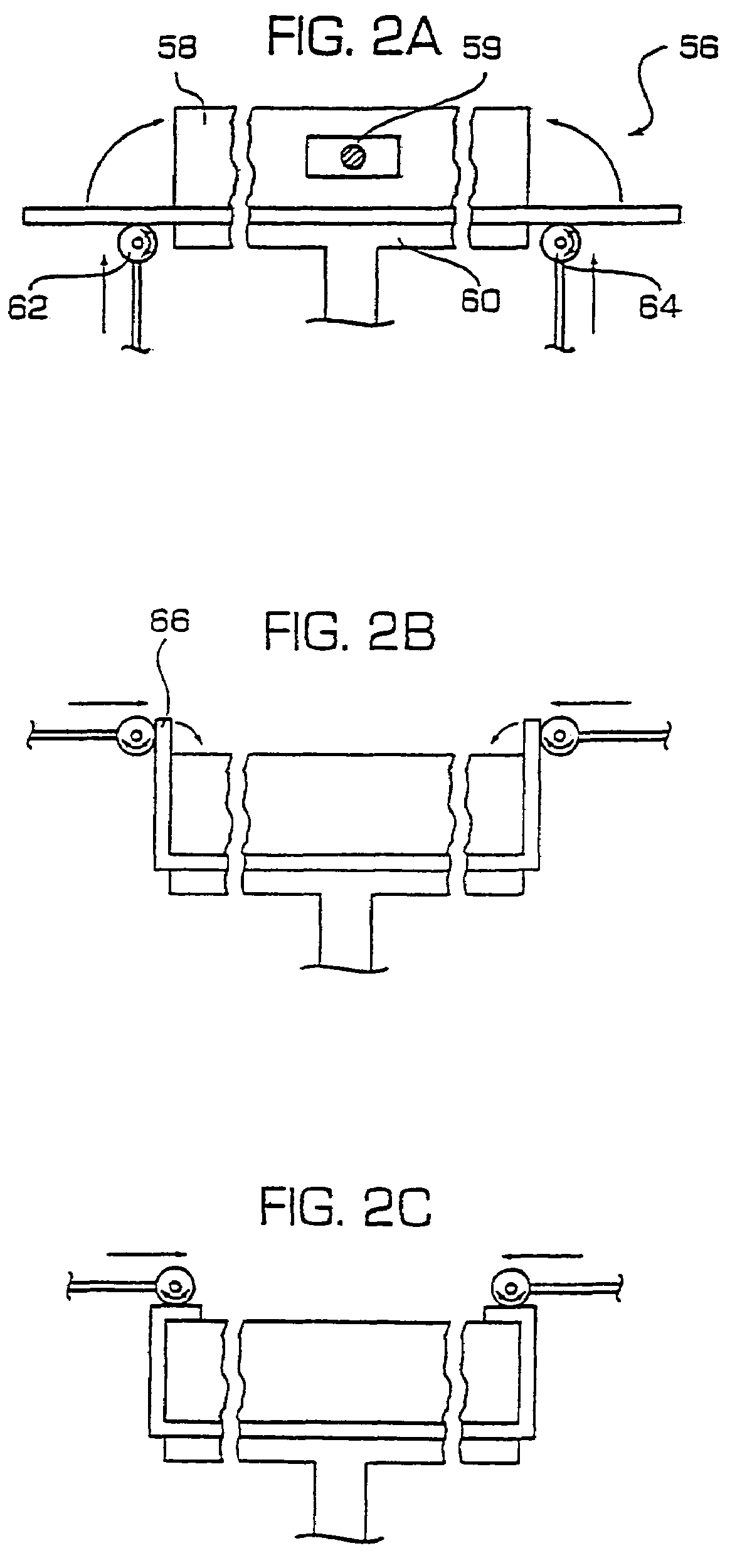Modular oven wall panel assembly
a module oven and wall panel technology, applied in the field of modules, can solve the problems of high labor intensity in the manufacture of u.s. '951, inability to effectively recoup or reapply custom structural components to future oven structures, and inability to quickly assemble and disassemble panels, etc., to achieve rapid assembly and disassembly, and convenient assembly and disassembly.
- Summary
- Abstract
- Description
- Claims
- Application Information
AI Technical Summary
Benefits of technology
Problems solved by technology
Method used
Image
Examples
Embodiment Construction
[0041]FIG. 1 provides a partially exploded cut away view of panel assembly 30 of the present invention. As shown in FIG. 1, panel assembly 30 comprises outer shell section 32 which, in a preferred embodiment features a single sheet of panel material that is bent on a first side along a first bend line 34 extending along the long length of the sheet and then along a second parallel bend line 36. The same bend arrangement is provided on the opposite side as represented in FIG. 1 by corresponding bend lines 34′ and 36′
[0042]Between respective bend line pairs 34–36 and 34′–36′ is formed peripheral edge segments 38 and 38′. First support flange section 40 extends inwardly from bend edge 36 and second support flange section 40′ extends inwardly to complete the C-shaped cross-section for outer shell section 32. As shown, peripheral edge segments 38 and 38′ extend transversely off from facing 44 of the outer shell section 32 and flange sections 40, 40′ extend inwardly toward each other and ...
PUM
 Login to View More
Login to View More Abstract
Description
Claims
Application Information
 Login to View More
Login to View More - R&D
- Intellectual Property
- Life Sciences
- Materials
- Tech Scout
- Unparalleled Data Quality
- Higher Quality Content
- 60% Fewer Hallucinations
Browse by: Latest US Patents, China's latest patents, Technical Efficacy Thesaurus, Application Domain, Technology Topic, Popular Technical Reports.
© 2025 PatSnap. All rights reserved.Legal|Privacy policy|Modern Slavery Act Transparency Statement|Sitemap|About US| Contact US: help@patsnap.com



